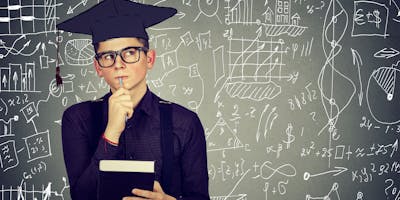For many years, students often felt they had to choose between college or a career. One path was widely viewed as academic and prestigious, while the other was seen as practical but sometimes undervalued. This way of thinking has shaped counseling conversations, curriculum design and even state funding decisions.
That mindset is beginning to shift. Increasingly, students are seeking flexible, purpose-driven pathways that prepare them for both higher education and the real world. Across the country, educators and communities are rethinking what readiness really means.
In the real world, education and career are not separate tracks; they are intertwined.
The need for change is significant. Most Gen Z high schoolers do not feel prepared for life after graduation. Only 22 percent of students gave their school an “A” for helping them figure out a career path. While students rated schools higher this year for core academics and teacher relationships, they rated preparation for the future (including learning relevant skills, exploring career pathways and getting ready for postsecondary education) only a “B-.” Too many students still leave high school without the confidence that they are prepared for what comes next.
This is where the conversation can shift to accommodate a broader opportunity. College is not the only destination, and a career is not the backup plan. A blended approach honors both and helps students build a future that reflects who they are, not just what the system expects. In the real world, education and career are not separate tracks; they are intertwined. High school should mirror that reality by offering students opportunities to explore, prepare and take ownership of their next steps.
College and career readiness means providing students with the opportunity to build academic rigor, develop career-ready and transferable skills, and gain real-world experience — simultaneously. Advanced Placement (AP), dual enrollment, and career and technical education (CTE) are converging to create more holistic, relevant and empowering high school experiences. These programs help students envision a future that reflects their interests, strengths and goals. They help students take charge of their learning and get ready for what comes next.
In many districts, that could mean rethinking high school as more than a series of required courses. Dual enrollment programs, for example, allow students to earn college credit while still in high school. These experiences not only save families money but also give students a confidence boost as they see themselves succeeding in higher-level coursework.
Readiness is not a one-size-fits-all formula. By weaving together rigorous coursework, career exploration and real-world experiences, schools help students discover their unique strengths and passions while equipping them with the tools to navigate multiple pathways.
Across the country, schools are reimagining readiness by blending academic learning with real-world opportunities. In some regions, students graduate with both college credit and industry-recognized certifications by combining dual enrollment with career academies. Many states have introduced health science pathways that integrate classroom instruction with hands-on experiences in labs, internships and certifications. Statewide initiatives are also demonstrating what’s possible when K-12, higher education and employers collaborate to offer early college programs, career pathways and work-based learning.
These blended approaches demonstrate that readiness is not a one-size-fits-all formula. When schools connect academic learning with career discovery, students begin to see their journey as both purposeful and possible. By weaving together rigorous coursework, career exploration and real-world experiences, schools help students discover their unique strengths and passions while equipping them with the tools to navigate multiple pathways. The goal is not to steer students toward one “right” path, but to create opportunities for them to personalize their own journey.
Of course, some barriers remain. Gaps in funding, limited flexibility in scheduling and long-standing assumptions about readiness can hinder students’ access to these opportunities. Yet innovative models across the United States prove it is possible to align resources and reframe readiness as both academic and career preparation.
The future isn’t either/or. It’s college and career. Every student deserves the opportunity to love their journey and graduate future-ready.
Districts don’t have to make this shift alone. With AP, dual enrollment and CTE curriculum tools, along with professional learning and partnerships, Pearson works with schools to help more students graduate with college credit, career credentials and the confidence to take on what’s next. Pearson is committed to expanding access so more schools can bring this vision to life. Learn more at Pearson.com/ccr.
